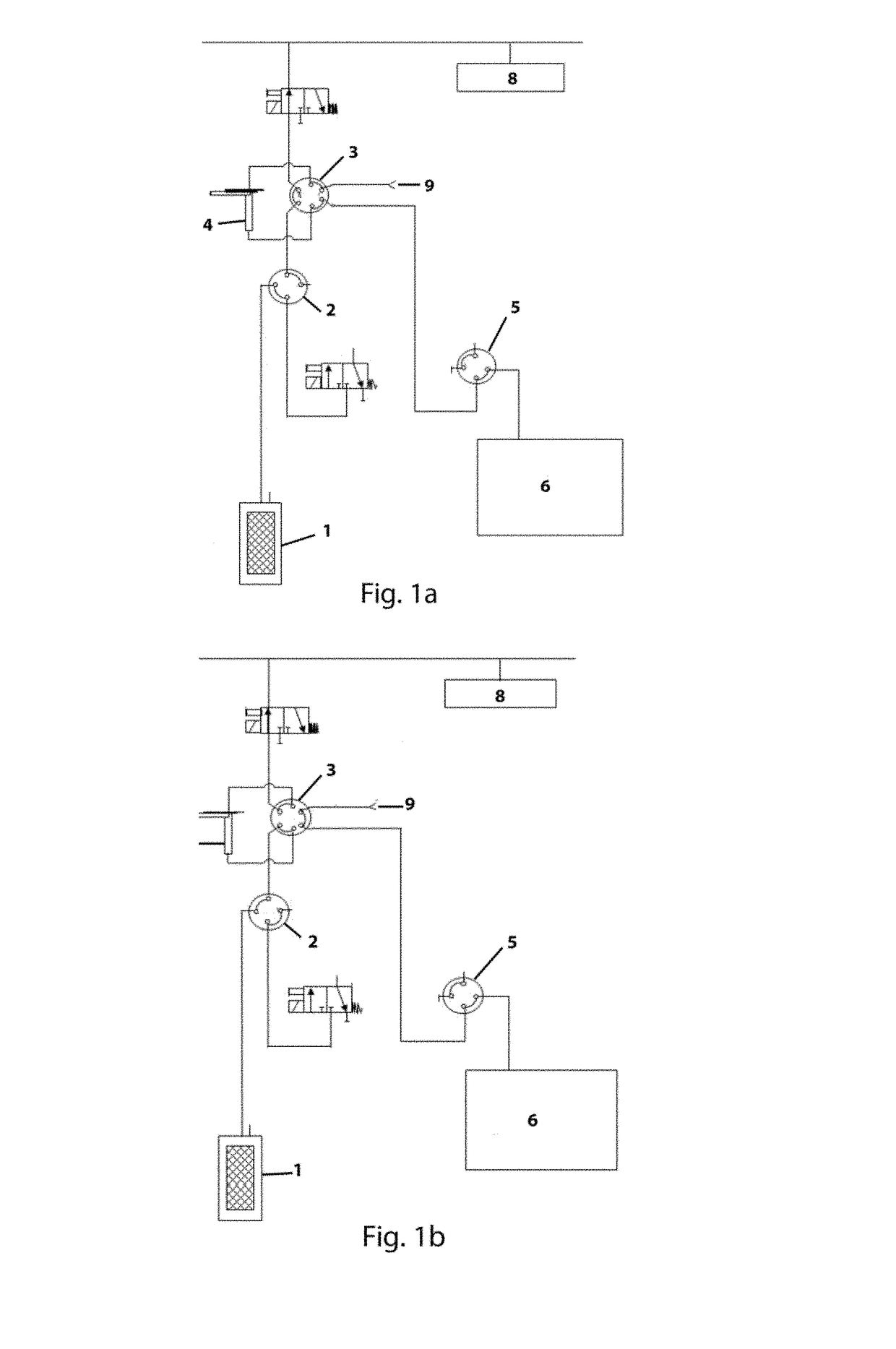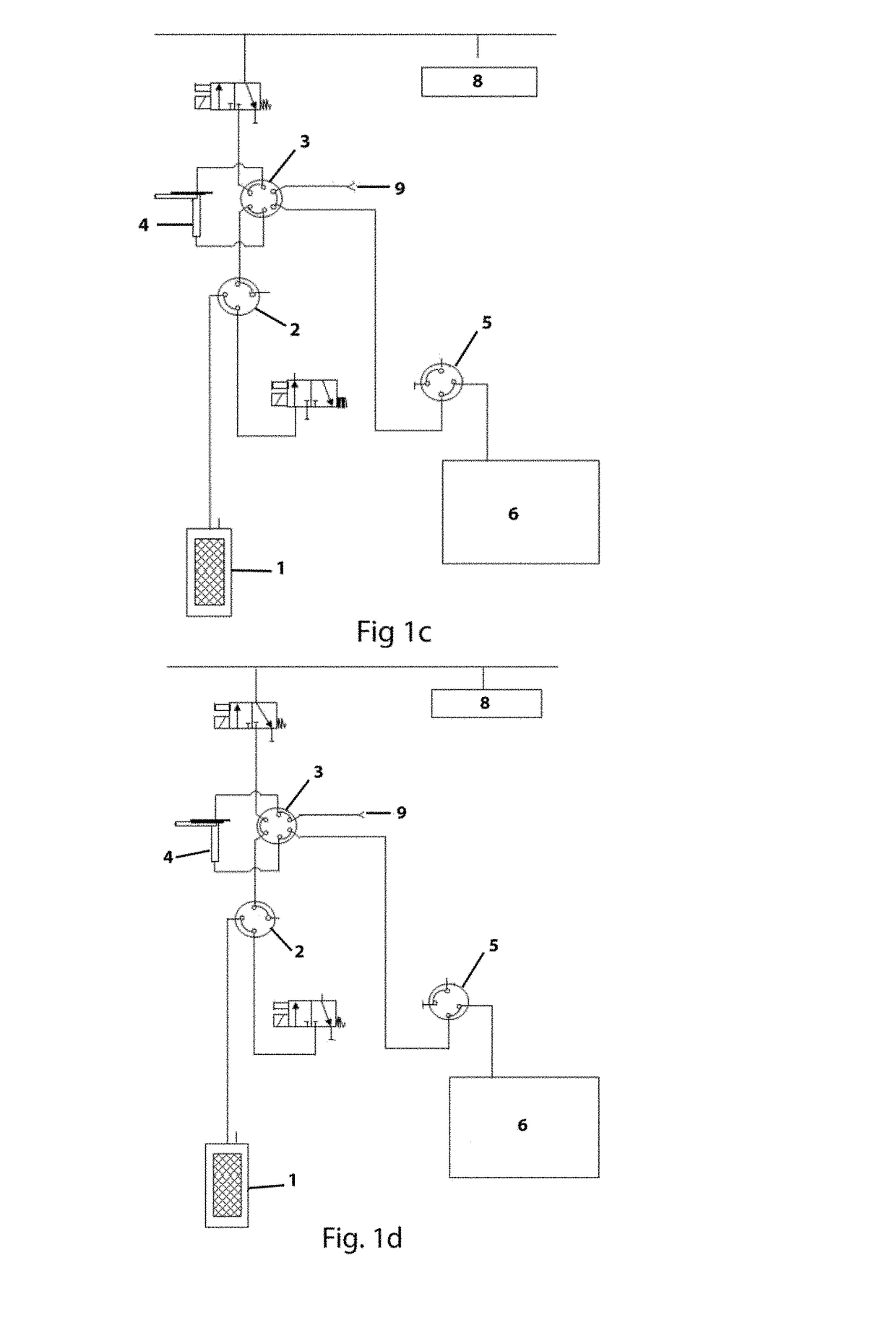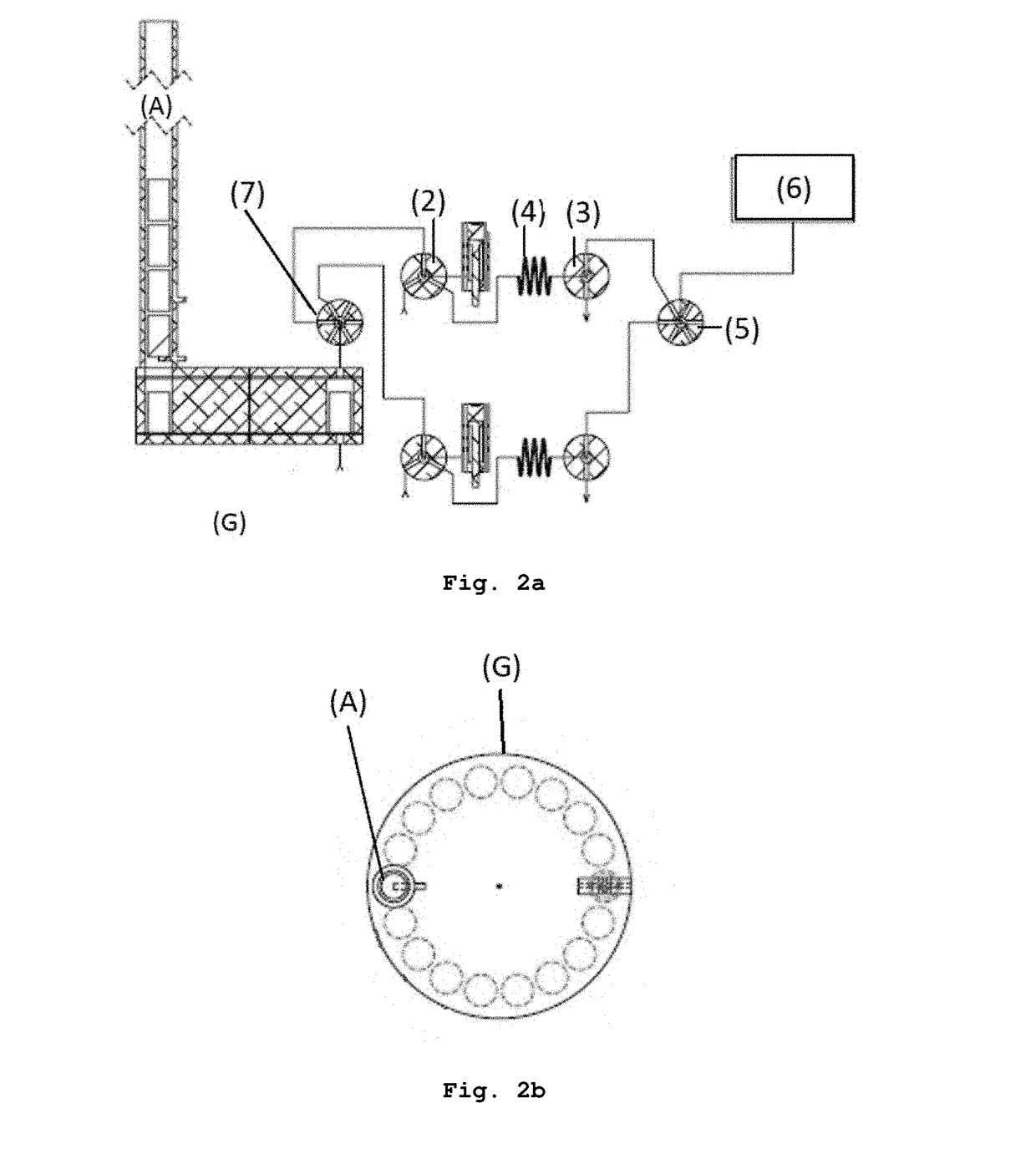Method for detecting a volatile analyte for classing and sorting cork stoppers depending on the concentration of the analyte
a technology of volatile analytes and cork stoppers, which is applied in the field of methods for volatile compounds, can solve the problems of reducing wine quality and its acceptance by consumers, serious losses to relevant wine brands and, consequently, to the cork sector, and the inability to apply this kind of treatment to the natural cork stopper
- Summary
- Abstract
- Description
- Claims
- Application Information
AI Technical Summary
Benefits of technology
Problems solved by technology
Method used
Image
Examples
example 1
[0099]In a carousel-type incubation chamber (1), with 18 positions and a capacity for 30 analysis / hour, the samples, i.e. the cork stoppers, are inserted for a 16-minutes incubation period to be started. The incubation chamber (1) is kept closed during the said period by means of a selector valve (2) which will be opened to remove (suction) the gas sample for analysis, this air being led to the concentration system which contains the traps (4) wherein the volatile compounds concentrate for analysis by adsorption. The samples remain in the traps (4) for 20 minutes. The volatile compounds will be carried to the detection equipment (6) which registers a signal related to the presence of the analyte. The analysis will be performed for 2 minutes / sample.
[0100]In this installation 2 traps (4) were used, which allowed a rate of 30 samples / hour.
example 2
[0101]In a carousel-type incubation chamber (1), with 60 positions and a capacity for 180 analysis / hour, the samples, i.e. the cork stoppers, are inserted for a 15-minutes incubation period to be started. The incubation chamber (1) is kept closed during the said period by means of a selector valve (2) which will be opened to remove (suction) the gas sample for analysis, this air being led to the concentration system which is comprised of the traps (4) wherein the volatile compounds concentrate for analysis by adsorption. The volatile compounds will be carried to the detection equipment (6) which registers a signal related to the presence of the analyte. The analysis will be performed for 20 seconds / sample.
[0102]In this installation, 6 traps (4) were used which allowed a rate of 180 samples / hour.
PUM
 Login to View More
Login to View More Abstract
Description
Claims
Application Information
 Login to View More
Login to View More - R&D
- Intellectual Property
- Life Sciences
- Materials
- Tech Scout
- Unparalleled Data Quality
- Higher Quality Content
- 60% Fewer Hallucinations
Browse by: Latest US Patents, China's latest patents, Technical Efficacy Thesaurus, Application Domain, Technology Topic, Popular Technical Reports.
© 2025 PatSnap. All rights reserved.Legal|Privacy policy|Modern Slavery Act Transparency Statement|Sitemap|About US| Contact US: help@patsnap.com



